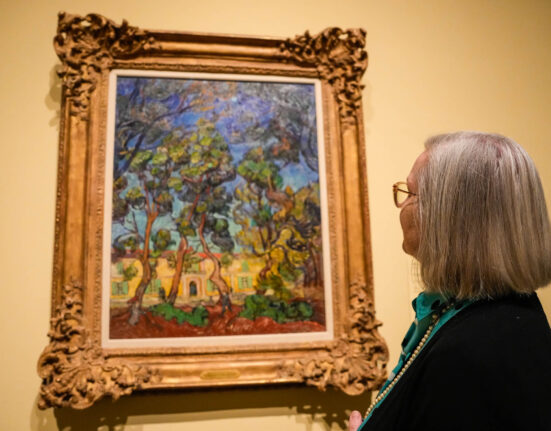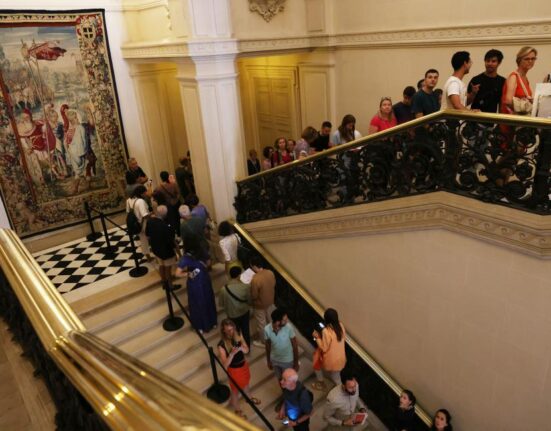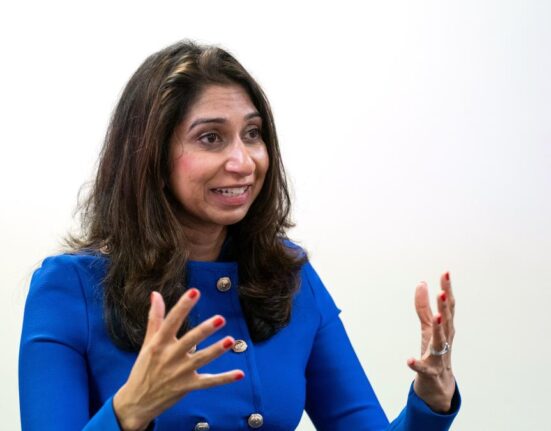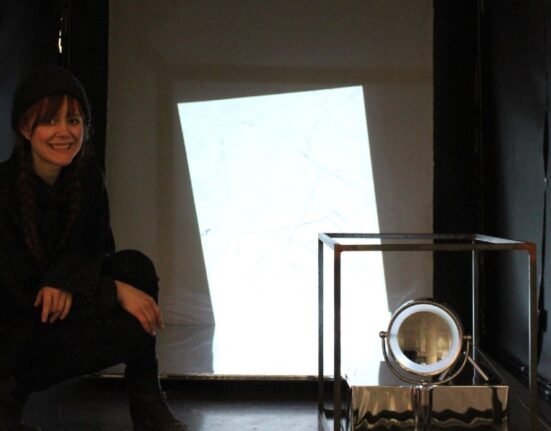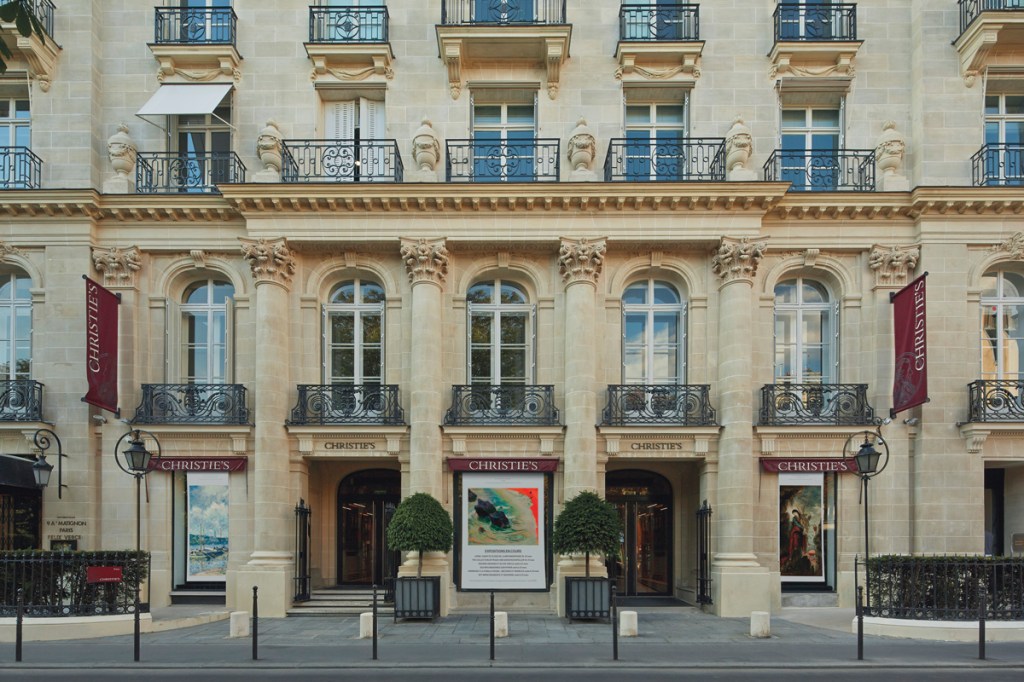
Courtesy Christie’s Images Limited
The stately mansion at 9 Avenue Matignon in Paris is steeped in history. Built in 1913 by architect René Sergent, who created commissioned work for the formidable art collector Pierpont Morgan and the famous dealer Joseph Duveen, it spent the last few decades of the 20th century as an art gallery founded by a makeup mogul, L’Oréal CEO François Dalle.
Since 2000, the building has served as the headquarters of Christie’s, the auction house owned by fashion magnate François Pinault. When Christie’s arrived on Avenue Matignon, the area around it already boasted some high-quality galleries—including Jérôme de Noirmont and Galerie RX—but as rents ascended, many had to leave and make way for the deeper pockets of international luxury goods stores. Over the past five years, however, that has changed. Emmanuel Perrotin, Kamel Mennour, and Almine Rech have opened galleries on the avenue, and set to open in September is a new outlet for the Chicago-based enterprise of French-Somali dealer Mariane Ibrahim. Keeping pace, Christie’s will later this year reopen its headquarters in a renovated and expanded building with street-level windows to show off its wares coming up for sale, including works on tour from its other global locations.
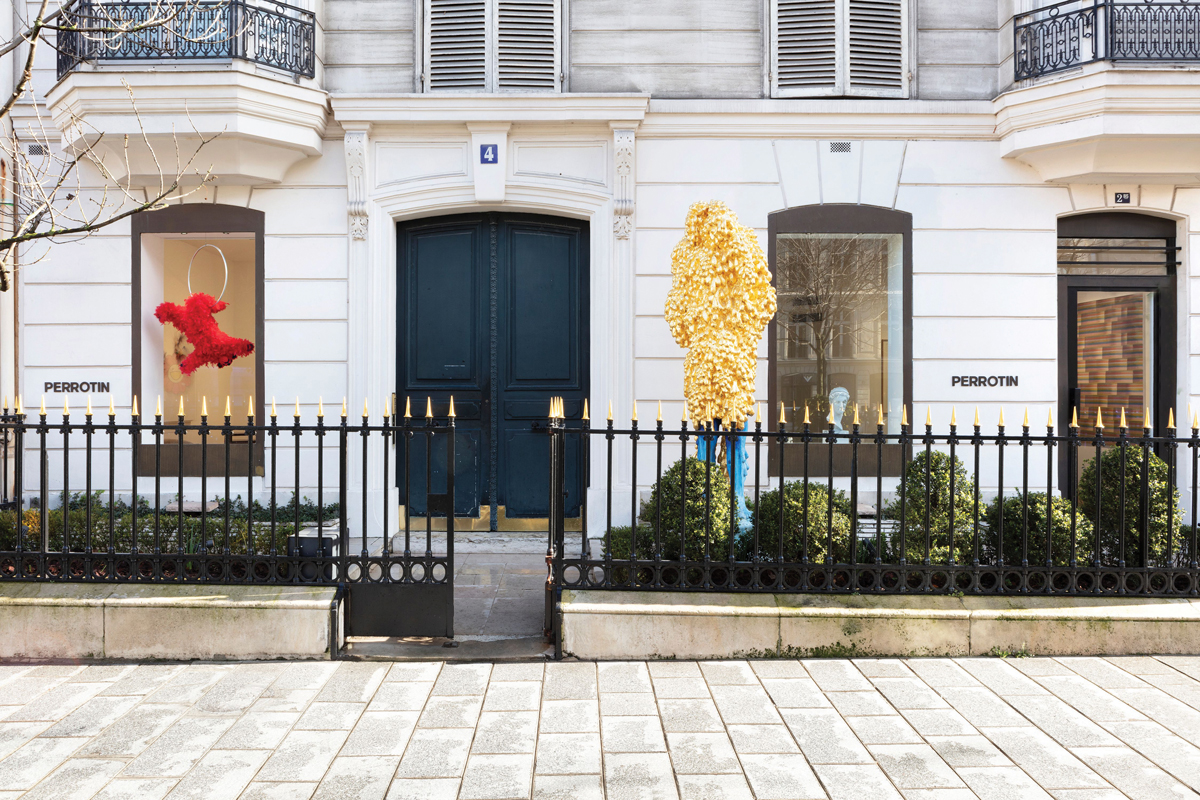
Perrotin’s space on Avenue Matignon. In September, the gallery will open another location on the same block.
Photo Tanguy Beurdeley
The gallery boom on Avenue Matignon is just one facet of Paris’s recent resurgence as an art center. In big-picture terms, France has taken on a more progressive image in the past few years by opening up to conversations surrounding cultural restitution. The market for luxury goods—a growing sector and increasingly a pathway to art collecting—is strong. The country’s longtime titans of art collecting, Bernard Arnault and François Pinault, are as active as ever. Meanwhile, French media mogul Patrick Drahi recently bought Sotheby’s—which operates its own Paris headquarters just a short swanky walk away from Christie’s—and has grown more ambitious in his own collecting.
Part of the recent surge comes down to Brexit jitters. Since the UK voted to leave the European Union in 2016, industry players speculated that Paris would benefit where London lost. The French capital’s concentration of museums and high-powered collectors and its long history of art put it in pole position on the Continent, should the trade race restart after shifting from London. The prospect of the summer 2024 Olympics in Paris adds to the momentum, enhanced as well by France’s relatively low value-added tax (VAT) on imports of fine art. At 5.5 percent, it is still above the UK’s 5 percent rate, but as one of the lowest levels in continental Europe, Paris post-Brexit is now the most attractive market—from a tax standpoint—for artworks to enter the EU. Buyers from outside the EU can pay the tax in France and then move their goods around the union more freely.
In 2019, the mega-gallerist David Zwirner was the first to vocalize explicitly that “Brexit changes the game.” Even if no one knew exactly why or how, it created market uncertainty of a kind that tends to shake up the status quo. At the same time, newspaper headlines in the UK were announcing the demise of its leading position in the financial trade—expected to shift to Germany—while a general sense of creeping xenophobia contributed to many European professionals’ deciding to move out of London. Zwirner announced the opening of his first gallery in Paris in 2019 while hedging his bets by also keeping his spot in the London Mayfair district. White Cube and Lévy Gorvy did the same, opening in Paris as they maintained their London galleries, while Marian Goodman went one step further a year later by shutting down in London and keeping her spaces in Paris and New York. “The current health crisis and Brexit have introduced even more uncertainty into the market, especially for galleries operating in London,” Goodman said at the time, sending shivers through an already nervous industry.

Marian Goodman’s Paris space on rue du Temple. She has had a presence in the city for 26 years.
Photo Rebecca Fanuele
The current Paris gallery boom traces back in many ways to 2012, when Larry Gagosian opened his ninth international space there and Thaddaeus Ropac opened his third. Nearly a decade later, the city has kept up its momentum. “Even if people are fearful for no reason and the build-up is in some way artificial,” Ropac said, “it’s a fact now: Paris is having a renaissance.”
France’s art market is small, when measured in macro terms. In the latest Art Basel and UBS Art Market Report, economist Clare McAndrew estimated the French market’s value at $3.1 billion in 2020, making for 6 percent of the global whole. She also found that France’s market fell 33 percent over a difficult year that affected business everywhere. By comparison, the UK’s 2020 market was estimated at $9.9 billion—or 20 percent of the whole—while falling less year-over-year, by a measure of 22 percent.
But the city has proved attractive beyond the size of its market. At auction, the highest-profile livestream sales of late have been transmitted mostly from four art market centers: New York, Hong Kong, London … and Paris. And the gallery scene continues to benefit from the city’s age-old allure. “There is a queue of dealers looking for somewhere in Paris,” Ropac said.
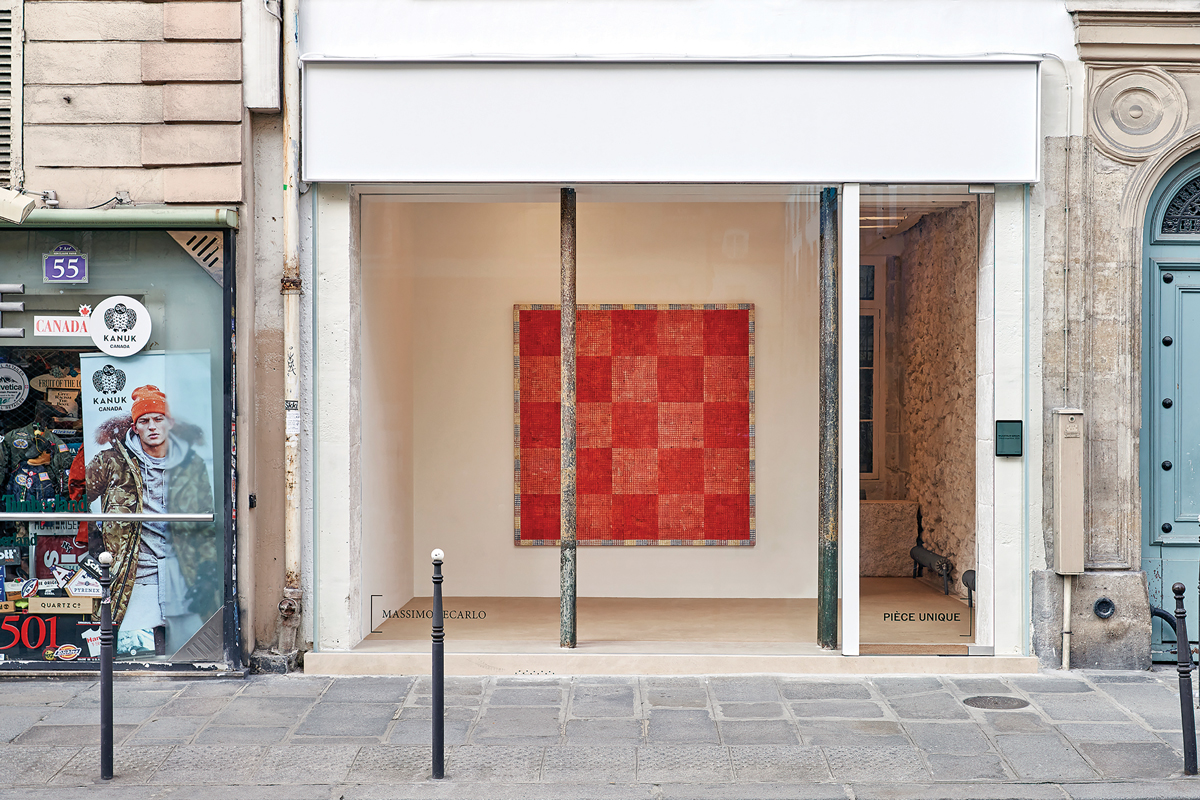
Massimo De Carlo’s Paris gallery, Pièce Unique, displays a single artwork; McArthur Binion,DNA:Orange:Work, 2020, which was on view there in March.
Photo Thomas Lannes
In 2021, Italy’s Galleria Continua opened its second Paris space and Massimo di Carlo his first, in lively areas around the Pompidou Centre and the Marais. Ibrahim, who is opening on the Avenue Matignon in the French capital’s smarter west end, believes that the revival of the historically conservative area of the 8th arrondissement draws in part from a fresh energy surrounding all of Paris at the moment. “There’s been an amount of elitism associated with the French art scene, but now there’s a sense that they are beginning to ask cultural questions and be more open,” she said, of the dialogue expanding around different kinds of art, in particular art with roots in Africa. “Before, you either had to show an African artist who painted in an un-African way to appeal to the elite—or sell primitive art. There was nothing in between.”
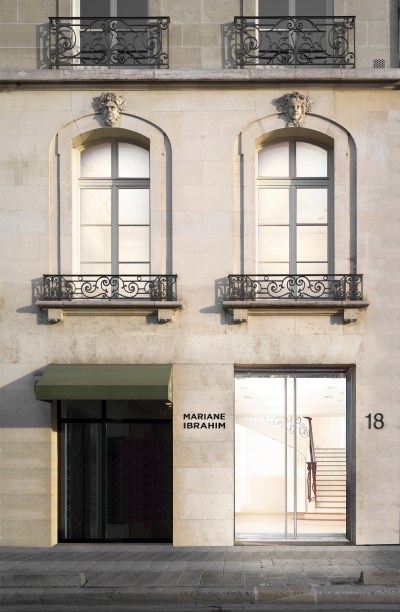
Mariane Ibrahim’s Paris gallery is scheduled to open in September 2021.
Courtesy Mariane Ibrahim
As the environment has evolved, news of the arrival of her gallery—with a focus on African diasporan art from around the world—was welcomed when it was announced in the spring. “It’s not easy to find a space here,” Ibrahim said of points of entry that can be hard to come by. “[But] there’s a small circle of influential people, and they want more of what we are showing, so that opened doors,” she said.
It helps that Ibrahim represents the in-demand painter Amoako Boafo, who was already the subject of great interest when she showed him at the FIAC fair in Paris in 2019—“before the goldrush,” as she characterized it. And even better: Boafo’s recent collaboration with the French fashion house Dior, its first with an African artist, has only strengthened his resonance in the country.
France’s colonial ties to Africa and the government’s recent commitment to restitute colonial holdings coincide with a booming market for the Continent’s contemporary art. In January, the 1-54 Contemporary African Art Fair relocated its Marrakech edition to Christie’s Paris, a one-time only plan born of necessity in unusual times that all the same underlined the existence of a willing collector community already in place. Bonhams auction house has expanded its operations on the rue de la Paix and will host a dedicated modern and contemporary African art sale there in November. “We are naturally going where the clients are,” Patrick Masson, Bonhams managing director, said of the move.
Paris can also lay claim to a long association with luxury goods—another growing sector that is huge in its own right, as well as a gateway to fine art. At a livestreamed auction of Old Master paintings at Sotheby’s in January, specialists on-screen flashed their Bulgari jewelry as they placed bids on artworks by Salomon van Ruysdael, Tintoretto, and Botticelli.
The auction houses have been expanding to Paris or reorienting their design and jewelry departments toward the city to be closer to both the source of consignments and a potential pool of buyers. Also driving the trend is that, since Brexit, buyers must pay a 20 percent UK import VAT on EU-consigned luxury items sold in London; fine art draws only 5 percent. While the export and import implications of the tax for art sales since Brexit are still not fully understood, and seemingly under constant review, it makes sense, when possible, to offer works in relative proximity to the majority of its buyers and sellers.
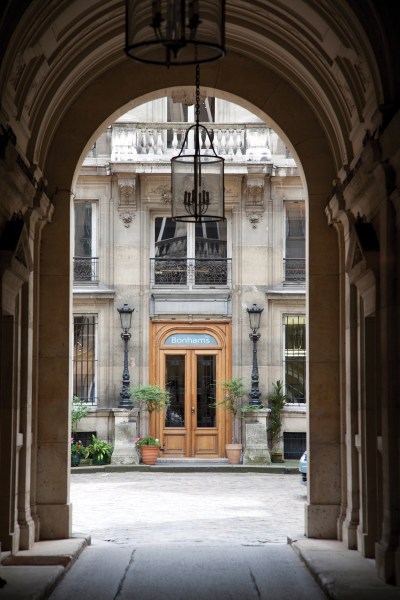
Bonham’s Paris headquarters.
Courtesy Bonham’s
In May, Bonhams Paris staged a two-part sale of luxury items, including jewelry, watches, and handbags. Phillips, whose specialty categories include design, jewelry, and watches, is also looking to expand in Paris, according to Phillips chairman Ed Dolman, more to give additional space to touring exhibitions of works than owing to the effects of Brexit, but he acknowledged the additional import VAT on some items is a potential burden.
Masson, of Bonhams, noted that, in the auction world, the market in Paris began to grow from its year-long slump long before any talk of Brexit. In 2001, France’s stringent auction regulations were relaxed, enabling overseas auction houses to bring their business to town. And the added competition gave the homegrown market a necessary boost. In 2002, Artcurial—at the time a gallery—was taken over and turned into an auction house that now specializes in fine art, cars, and jewelry, and often tops France’s auction league sales figures. Meanwhile, FIAC, the country’s leading art fair, proved increasingly influential on an international stage after it moved back to the Grand Palais in 2006 under the co-direction of Jennifer Flay and Martin Bethenod.
While buyers may not be as numerous in Paris as in other hot spots, the city boasts a few very high-profile ones, particularly of contemporary art. And the city’s notorious luxury goods titans keep adding to the groundswell of cultural activity. In 2016, Arnault, chairman and chief executive of LVMH Moët Hennessy, opened his own Frank Gehry–designed museum, the Fondation Louis Vuitton, to great acclaim. The Bourse de Commerce, the long-awaited new museum for Pinault’s collection, was restored by another starchitect, Tadao Ando; it opened in May, with FIAC director Bethenod at its helm, after several Covid-related postponements. Also opened in May is the spirits-business enterprise Pernod Ricard, which has a space dedicated to its family collection in the new Paris headquarters, including an auditorium for large-scale artworks and performances.
Outside of such prominent collectors, France’s art buyers are generally more under the radar, without the focused money-wins-all approach that better characterizes the New York, London, and Hong Kong spheres. “France has a wider-spread market,” Masson said. It’s more about lower prices and a higher volume of sales. Nowhere else in the world is there anything like the auction collective Drouot, a rent-a-spot building with 15 salesrooms that hosts about 60 independent auctioneers in hundreds of categories.
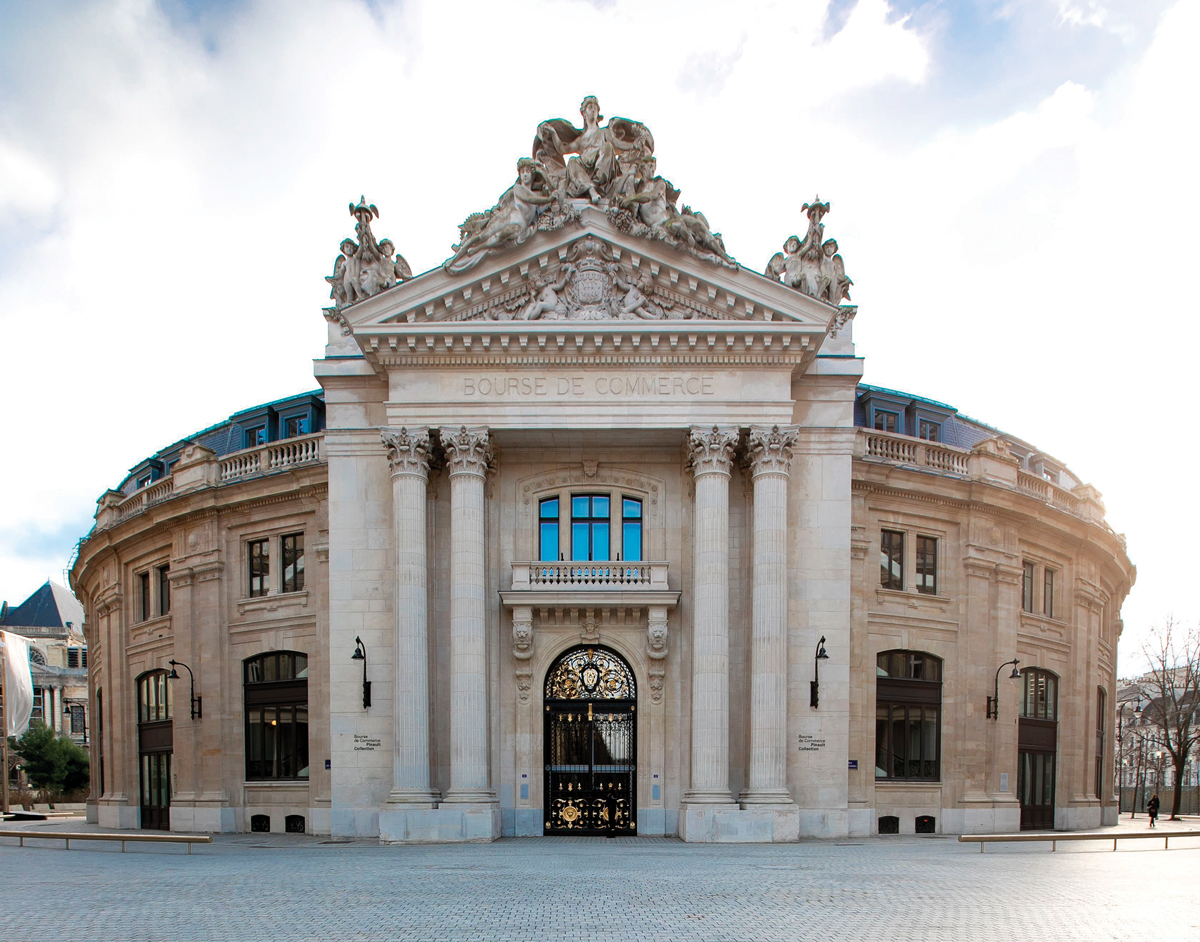
The Bourse de Commerce, new home of François Pinault’s contemporary art collection.
Romuald Meigneux/SIPA/AP
What role Brexit will play in the art market remains to be seen. From the point of view of the global art market, not much has actually happened since the EU-UK Trade and Cooperation Agreement replaced the single market and customs union at the end of 2020, besides the accumulation of mountains of paperwork as galleries and auction houses have been forced to arrange additional customs clearances, implement new protocols for tax and other duties, and fill out different sets of forms. This has led to delays at borders as officials have also had to learn new procedures. “Right now it’s all about getting to grips with the documentation,” said Sarah Barker, an art lawyer at Lee & Thompson. Most businesses already use specialist shippers and logistics firms to manage the red tape, at additional cost, of course. Visas for artists and other professionals are another sticking point that might prove expensive.
The coronavirus pandemic has certainly had its own effect, likely masking other of the market’s woes. “Everything is obscured by Covid—it’s hard to separate out,” said Anthony Browne, chairman of the British Art Market Federation.
Nevertheless, predictions suggest that, thanks to Brexit, British exports overall will fall 36 percent as British citizens’ incomes drop by 6 percent over the next 10 years—both figures greater than the pandemic’s projected impact, according to The Economist. And money has been pouring out of London at a troubling rate. In January, Amsterdam overtook London as Europe’s largest-share trading center, while exchanges in Paris and Dublin experienced Brexit-related uplifts in the same month. Though such shifts are expected to settle back, they represent a new fault line in a city that was built around its dominance in trade.
In the short term, Dolman said, “it is difficult to say anything is helpful” about Brexit. But he and most other market players are confident that London will continue as a leading center for the art trade, something that would be difficult to replicate fast. “London still has a huge amount to offer in terms of selling to the international market—Paris isn’t quite there yet,” Dolman concluded.
Art market professionals acknowledge too that France can be a tricky place to do business. “It is so hard to set up in Paris,” said Ibrahim. “The level of bureaucracy here is really intense—and I’m French! I don’t know how Americans or the Brits manage it.”
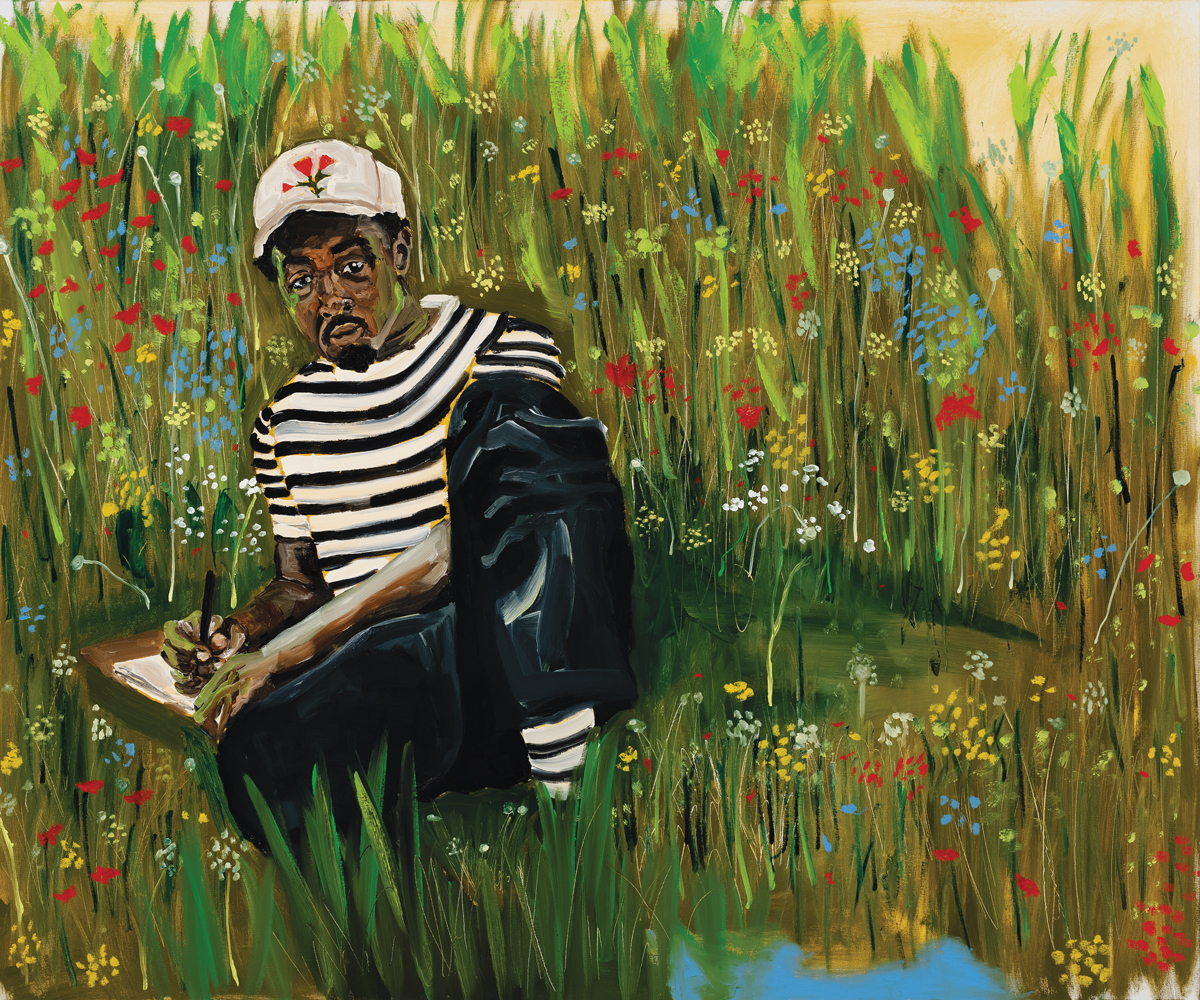
Jerrell Gibbs, For Thomas, 2021. Gibbs is one of the artists whose work will be included in the inaugural show for Mariane Ibrahim’s Paris location.
Courtesy Mariane Ibrahim
Some galleries have chosen to keep their focused attention on London for the time being. “We were about to make a deal on a place in Paris and then the pandemic struck,” said Marc Glimcher, president of Pace gallery. “If the explosion of galleries continues, I’m sure we’ll open there,” but for now, Pace continues to channel its international ambitions in London, where it plans to open in a new gallery on Hanover Square that is being renovated in time for Frieze Week in October.
Optimists say that if the art market can start growing again after a rough year, there could be room for two European centers of trade—even if, in truth, comparisons between Paris and London are small-scale in the global sense. Drivers of future growth are more centered in China and other areas in Asia than in any European capital. The latest Art Basel and UBS Art Market Report found that 87 percent of London’s art and antiques imports in 2020 came from outside the European Union—“meaning much of the higher value trade with major partners such as the U.S. and China remains unaffected.” These are the countries that could be the real beneficiaries of Brexit, the report suggests, as trade bypasses the latest complications in Europe altogether. As Phillips chairman Dolman said, “The story is not really about London versus Paris but about the major shift to the East.”
Nonetheless, there is much to play for on the local level, and one lesson from the pandemic is that maintaining a regional approach can be smart as, in certain ways, the world has seemed to shrink around us. With that in mind, the market—and where the buyers are—will be the measure in the end. “Ultimately,” Glimcher said, “the only question is: Are you making more money somewhere than you are losing?”



